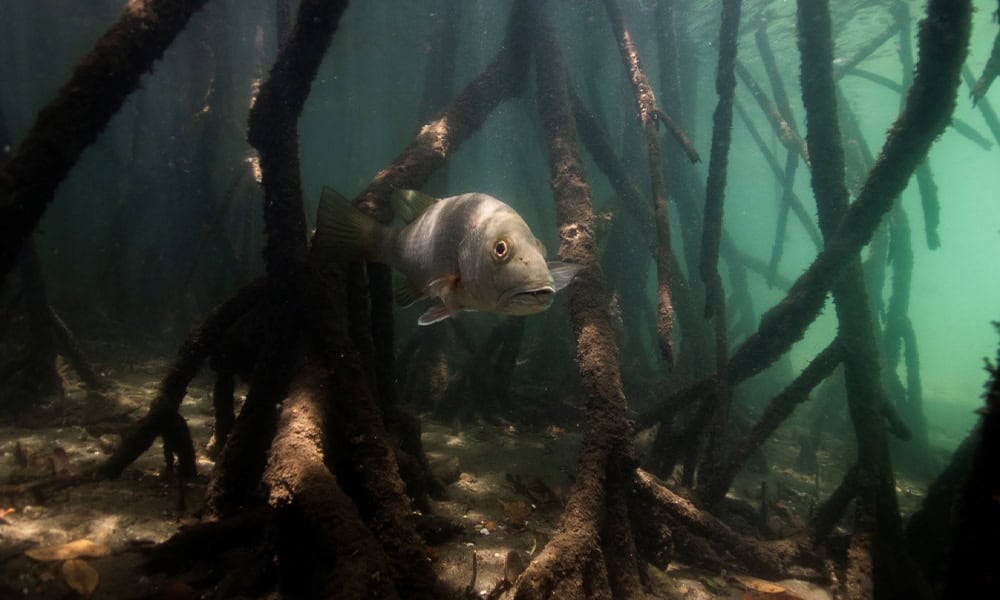A groundbreaking study by the Center for Marine Science and Limnology Research (CIMAR) at the University of Costa Rica and the University of Windsor in Canada reveals the secret life of snappers in the Pacific off Costa Rica. Using acoustic telemetry, the research shows how Bahía Santa Elena serves as a key refuge for snappers, connecting conservation efforts with sustainable fisheries.
According to the findings, these species remain there for up to two years while they grow and then gradually move out of the bay, where they can be exploited by fishermen. In this study, the movements of two snapper species (red snapper, Lutjanus colorado, and black snapper, Lutjanus novemfasciatus) were monitored using an innovative acoustic telemetry system over two years.
The results indicated that both species of snapper reside in the bay for extended periods, primarily utilizing mangrove and reef areas at different developmental stages. However, as they grow larger, they migrate to the outer environments of the bay. Furthermore, it was noted that the fish alter their behavior during the dry and rainy seasons.
According to the study’s lead researcher, Lucía Vargas, “our results demonstrate the importance of the Bahía Santa Elena Marine Management Area as a breeding, feeding, and growth area for species of high economic value, such as snappers, which, upon leaving the bay, can be exploited by local fisheries.”
Vargas emphasized the necessity of using underwater remote monitoring techniques, such as acoustic telemetry, which generates information on the movements of multiple individuals and species simultaneously over extended periods.
Dr. Mario Espinoza, CIMAR researcher and co-author of the study, underlined the significance of identifying and protecting sites like Bahía Santa Elena, which enhances connectivity among essential environments for marine life, such as mangroves and reefs. He also stressed the importance of integrating scientific knowledge and local expertise into fisheries management to ensure long-term sustainability.
The study monitored the movements of 30 juvenile snappers over two years using a network of 28 acoustic receivers—devices that record the presence of fish tagged with acoustic transmitters located in Bahía Santa Elena. Published in Marine Ecology Progress Series, this study opens new avenues for research, fisheries management, and conservation in tropical marine regions.
The team intends to continue analyzing how these species share spaces inside and outside the bay, complementing the data with other monitoring techniques and fostering international collaborations to expand these types of studies.






